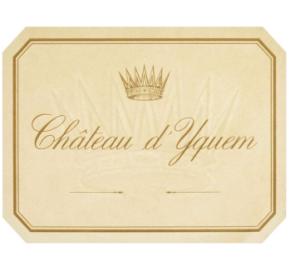
Chateau d'Yquem 1998
- Producer Chateau d'Yquem
- Blend 100% White Bordeaux Blend
- Country France
- Region Bordeaux
- Appellation Sauternes
- UPC N/A
Tasting Notes
These impressions are just coming to the fore, but are sure to develop over time. This potential also comes through on the palate, which starts out quite round and then goes on to show a great deal of volume. Tremendously luscious and enjoyable! The sweetness is counter-balanced by just the right amount of acidity.
Mandarin orange, apricot, and fruit paste flavours are followed by toasty, vanilla hunts due to barrel ageing. The roundness and fullness come through again on the long aftertaste, a delightful medley of all the preceding savours.
If consumed in the first few years of its life, aerating this wine will help a great deal to appreciate all it has to offer.
Vintage 1998
Harvest
Many grapes were ready to harvest on September 22nd. The first wave of picking, lasting five days, was unusually large thanks to the summer-like temperatures (25-27 Celsius). The grapes were perfectly ripe, concentrated, and botrytised without any sign of grey rot or sour rot.
Twenty mm of rain brutally disrupted picking on September 27th, followed by the tail end of a tropical cyclone which affected all of France. The vintage ground to a halt for two weeks. However, this long humid period was essential for the spread of botrytis.
The crop became completely affected by noble rot around October 10th, at which point the weather once again turned mild. The harvest was thus able to resume on the 13th. We took advantage of each day of fine weather from then on (with one interruption on Monday, October 19th to give pickers a rest) to bring in the rest of the crop.
This second part was hugely botrytised. Sugar levels rose dramatically thanks to the dry weather, with some batches of grapes reaching 20.5 degree potential alcohol. Rain between October 23rd and 26th once again stopped the harvest. The fourth and last wave of picking began on October 28th, ending two days later.
Meanwhile, in the cellar, the grapes picked in late September had already fermented and were starting to age in barrel. From the very first, the wine was particularly aromatic (pineapple, apricot, and quince) with extremely powerful, well-focused fruit. Subsequesnt lots of wine tasted very different but no less interesting with greater richness and many more candied fruit (rather than fresh fruit) overtones.
Once the harvest was over, our judgement of the new vintage was more intuitive than objective. This is because 1998 is a blend of two very different batches of grapes, the first picked around September 25th and the second around October 20th.
Thanks to skillful blending, the 98 vintage is well-balanced and has very promising potential.
Weather Conditions
It rained a great deal in April, enabling the soil to store water that later proved very useful during the severe drought that lasted until the end of August. The temperatures were consistently above average, so both the flowering and veraison (colour change) took place ten days earlier than usual.
In brief, the weather was very conducive to growing quality fruit, as proved by Sauvignon Blanc grapes with 14.5 degree potential alcohol as of August 31st.
